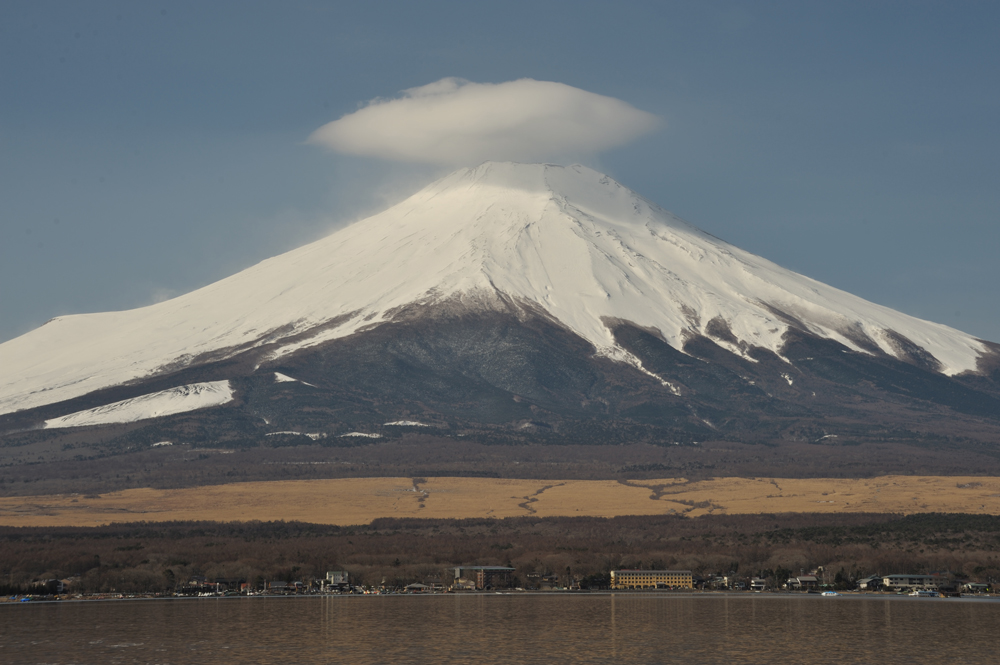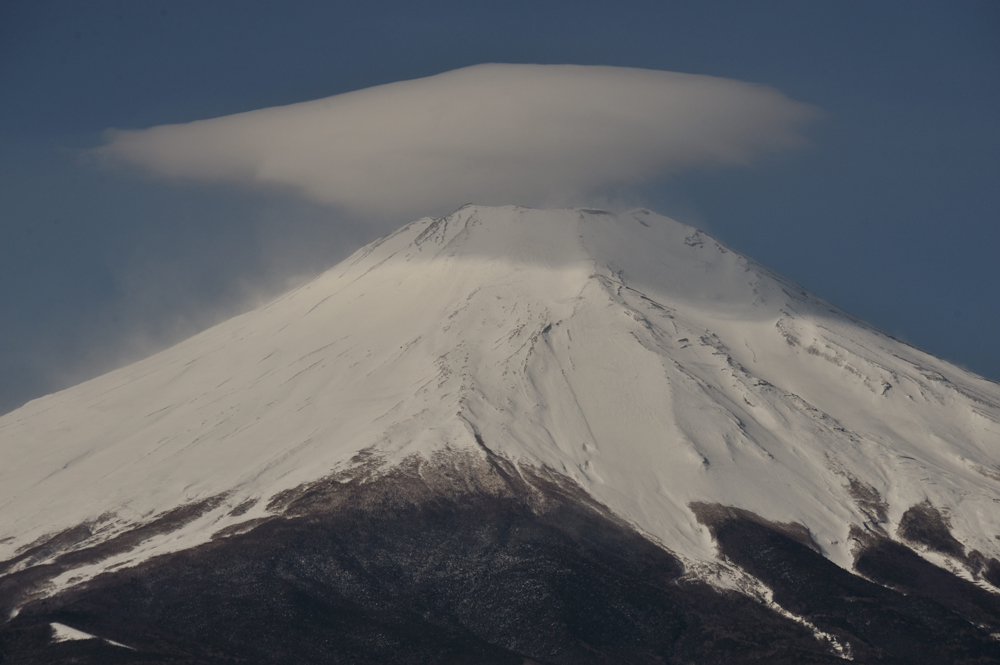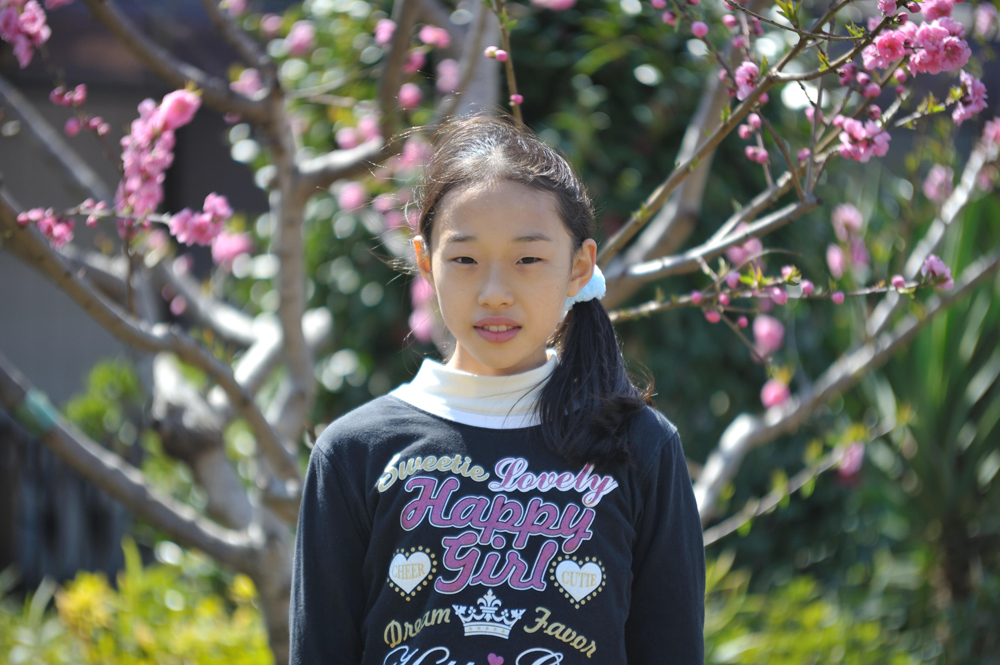NIKKOR - The Thousand and One Nights No.47

The Ai Zoom Nikkor 35-200mm f/3.5-4.5S
Tale 47 discusses a lens developed at a time when many lens manufacturers were racing to develop zoom lenses. In this tale we will examine the thoughts of the designer and episodes that arose in the development of the Ai Zoom Nikkor 35-200mm F3.5-4.5S. What exactly led up to the development of this lens? Just how did it perform? Tale 47 brings to light the secrets of the Ai Zoom Nikkor 35-200mm F3.5-4.5S.
by Haruo Sato
The goal–—high-power zoom
1970-1980 represented the heyday of the zoom lens. All manufacturers were actively announcing new zoom lenses. What was the motivation? While user demand certainly played a role, overwhelming improvements in computer processing capabilities was a major factor. Earlier design methods and tools did not always allow designers to test their ideas, regardless of how good those ideas may have been. However, though not yet perfected, new advances in software around the same time began to enable design inspection and testing on a large scale.
The products of these advances were wide-angle zoom lenses and high-power zoom lenses that covered normal focal lengths. While early high-power lenses were certainly inferior to similar lenses designed today, designers worked very hard and utilized the latest technologies available to them to achieve the results they did. It was at this time that Nikon led the industry by developing the Ai Zoom Nikkor 35-200mm F3.5-4.5S with its 5.7x zoom ratio.
II. Development history and the designer
Let's examine the history behind development of the Ai Zoom Nikkor 35-200mm F3.5-4.5S. The lens was designed by Mr. Tomowaki Takahashi, who worked in the First Research Department, Research Institute as the department was known at the time. Takahashi designed several zoom lenses beginning at the 35-mm focal length, but the Ai Zoom Nikkor 35-200mm F3.5-4.5S represented the culmination of his work. At that time, photographic lenses were designed by two departments at Nippon Kogaku K.K. (now Nikon Corporation). The first was the First Research Department, Research Institute, which developed the latest lenses and optics software, and the second was the First Optical Section, Optical Designing Department, which developed the majority of photographic NIKKOR lenses.
Though Takahashi initially worked in the First Research Department, Research Institute, this department and the First Optical Section, Optical Designing Department were later combined to form a new First Optical Section.
This provided research institute employees at the time with the necessary environment to design true photographic lenses. Based on his distinguished work, Takahashi was made the manager of the new First Optical Section. As I came to work for Nippon Kogaku K.K. at this time, Mr. Takahashi was my boss.
As an optical designer, Takahashi also developed optics software. He was a very candid, warm-hearted gentleman, and is one from whom I learned a great deal and to whom I am very much indebted.
All of the above led to the development of the Ai Zoom Nikkor 35-200mm F3.5-4.5S. However, progress in the development of the lens was rather unusual. First, basic design was completed. Around the time that the first prototype was ready, the new First Optical Section was created and Takahashi was made manager of the department. Next, further improvements to design were entrusted to another designer. Design work continued with Mr. Jun Sekine, of the First Optical Section, Optical Designing Department, overseeing design improvements, mass production and sales. As a child of the zoom age, Sekine had previously designed NIKKOR lenses, such as TV-Nikkor lenses, for electronic imaging devices at the Research Institute. Mr. Sekine was a very calm, serious and dauntless man who taught me a lot.
Now let's look at reports and drawings. Development of the Ai Zoom Nikkor 35-200mm F3.5-4.5S began in 1982 with design completed in the spring of 1983. Prototype plans were submitted in the summer of 1983. Mass-production trials were completed and mass production began at the end of the winter of 1984. As Nikon's first high-power zoom lens, a number of difficulties arose with trial and mass production, especially with regard to the high level of difficulty in the manufacture of this type of lens, initially faced with trial production.
The biggest problem was less-than-expected sharpness caused by inconsistencies in focal plane position at various focal lengths. Sekine resolved this issue with a straightforward method consisting of careful correction of the prototype cam with repeated recalculation. This resulted in a satisfactory cam and mass production began. After overcoming various difficulties, this high-power zoom lens was released in December 1985.
The Ai Zoom Nikkor 35-200mm F3.5-4.5S was designed using a mainframe computer and the latest optics software. However, even mainframe computers at that time offered much less in the way of capabilities than today's computers, and optics software was still in its early stages. The high level of difficulty in designing high-power zoom lenses at that time most definitely required great intelligence and perseverance. After the Ai Zoom Nikkor 35-200mm F3.5-4.5S, Sekine continued to design NIKKOR lenses. His abilities in the field of lens design go without saying.
III. Rendering performance and lens performance

Take a look at the cross-section of the lens. This type of lens is known as a positive-lead zoom lens (has a convex lens group at the front). The lens is constructed with a four-group structure consisting of a convex first group (from left), which is also the focusing group, a concave second group, a convex third group that includes the aperture, and a convex fourth group that serves as the master lens group. With zooming, all lens groups move to the left (forward toward the subject).
The structure of each group follows standard theory, with the fourth master group utilizing a modified triplet structure. The large number of elements in the fourth group is necessary for a high-power zoom lens. A feature of this positive-lead, four-group zoom lens is the short length possible at wide-angle positions, a structure that helps to enable a smaller, more compact lens.
At that time, a successful means of mass producing aspherical lenses had not yet been established. In addition, the internal focus cam now used in zoom lenses had not yet been developed. Therefore, focusing had to be performed with the first lens group, in front of the variator lens group. These restrictions ensured a number of inherent faults, including the inability to enable shooting at close distances, any increase in light volume at frame peripheries, or adoption of a small maximum diameter (filter attachment size). Despite these restrictions, however, a filter attachment size of 62mm and a closest focus distance of 1.6 m were achieved with the Ai Zoom Nikkor 35-200mm F3.5-4.5S. These were truly impressive specifications for the time.
So, how does the Ai Zoom Nikkor 35-200mm F3.5-4.5S perform with shooting? Let's consider performance based on both aberration characteristics and spot diagrams. First we'll look at the design report. If we look at aberration value, MTF and point image formation at each focal length, the difficulties faced by the designers of high-power zoom lenses at that time become apparent.
Just what are the features of this lens? First, spherical and chromatic aberration were effectively compensated at the wide-angle 35-mm position. Curvature of field in the negative direction occurred, but compensation ensured little astigmatism. However, inward coma was significant. This resulted in flare in the downward direction at frame peripheries, but we can assume that rendering was soft yet preserved a certain degree of sharpness. Due to measures taken to preserve light volume at frame peripheries and reduction of the filter attachment size to just 62mm, the distortion value at infinity was relatively high at approximately -6%. However, distortion decreased as shooting distance decreased for a value of just -1.6% at the closest focus distance. These characteristics would imply that sufficient aberration compensation was applied for this high-power zoom lens.
How did the lens perform at mid-range focal lengths? Let's take a look at aberration characteristics at the normal 50-mm focal length. First, very little spherical aberration, curvature of field or astigmatism was visible. Distortion was also improved for a good value of approximately 1.4%. Probably the only fault was significant outward coma. Flare occurred in the upward direction at frame peripheries, but we can assume that rendering was soft yet preserved a certain degree of sharpness.
Next let's look at aberration characteristics at the 70-mm focal length. Slight over-correction for spherical aberration increased the chances of flare at the center of the frame. Very little curvature of field or astigmatism was visible. While there was little chromatic aberration, outward coma was still significant. This resulted in flare at the center portion of the frame and also in the upward direction at frame peripheries, but we can assume that rendering was soft yet preserved a certain degree of sharpness.
Finally, let's look at aberration characteristics at the 200-mm focal length. Spherical aberration was under-corrected. Little spherical aberration was visible. Though there was little astigmatism, curvature of field in the negative direction did occur. Very little coma meant that consistent rendering could be expected. Distortion was slightly high for a value of approximately +3%.
If we look at aberration compensation at all focal lengths, it certainly cannot be said that the results achieved were in any way superior. However, as the first high-power zoom lens, design of the Ai Zoom Nikkor 35-200mm F3.5-4.5S was definitely ingenious, and resulted in images exhibiting no serious corruption. The hard work and skill applied by the designers of this lens are evident.
Next, let's look at point image formation with spot diagrams.
We'll start at the 35-mm wide-angle position. Point image formation was good at the center of the frame and no flare was visible. However, points closer to frame peripheries tended to exhibit comet-shaped flare similar to inward coma, but preserved a certain degree of sharpness. The result was relatively good resolution, but rather soft rendering.
At 50mm, there was a slight amount of flare at the center of the frame, but image formation was quite sharp. However, comet-shaped flare similar to outward coma occurred at the extreme edges of the frame. It seems likely that rendering was soft yet preserved a certain degree of sharpness.
At the 70-mm focal length, spherical aberration at the center of the frame caused flare around the center. In addition, outward coma at frame peripheries caused slightly comet-shaped flare. Flare occurred throughout the entire frame, and it seems likely that rendering was soft yet preserved a certain degree of sharpness. Performance at this focal length seems likely suited to portraits.
Finally, let's look at results at the 200-mm maximum telephoto position. Flare at the center of the frame was small and the point was sharply formed. Under-correction for spherical aberration leads me to assume that blur characteristics behind the focus point were pleasing. Point image formation at frame peripheries was also good with little flare, leading to an expectation of good, consistent sharpness.
IV. Performance with actual images and examples
Next let's look at the results achieved with actual shooting. Details regarding performance at various focal lengths are noted.
(1) Wide-angle, 35-mm focal length
Maximum aperture f/3.5 to f/4
Though resolution is relatively good at the center of the frame, flare seems to gradually increase toward the edges for softer rendering. There is a lot of flare at the four corners and resolution is low. However, with little color bleed, colors are sharp for pleasing results.
f/5.6 to f/8
By stopping down the aperture, resolution increases from the center of the frame to the mid ranges for good results everywhere except some peripheries and the extreme corners.
f/11 to f/16
More than satisfactory sharpness is achieved everywhere except the extreme corners.
f/22
Rendering is consistent throughout the frame, but sharpness, especially at the center of the frame, is reduced due to diffraction.
(2) Normal 50-mm focal length
Maximum aperture to 1/2 stop down
Though resolution is relatively good at the center of the frame, flare seems to gradually increase toward the edges for softer rendering. Resolution is low at the extreme corners. However, with no color bleed, colors are good.
1 stop to 2 stops down from maximum aperture
By stopping down the aperture, sharp image formation from the center of the frame to the mid ranges is achieved for good results everywhere except some peripheries and the extreme corners.
3 stops to 4 stops down from maximum aperture
The sharp range is further expanded, but sharpness at the center of the frame is reduced due to diffraction.
Minimum aperture
Rendering is consistent throughout the frame, but sharpness throughout the frame is reduced due to diffraction.
(3) Mid-range 70-mm focal length
Maximum aperture to 1/2 stop down
Though resolution is relatively good from the center of the frame, there is some flare and slight bleeding of blues. In addition, flare gradually increases toward frame peripheries and resolution is reduced at the extreme corners. The image exhibits flare throughout the frame and rendering is soft.
1 stop to 2 stops down from maximum aperture
By stopping down the aperture, flare and color bleed, especially at the center of the frame, is eliminated for improvement everywhere except the extreme corners.
3 stops to 4 stops down from maximum aperture
The sharp range is further expanded, but sharpness at the center of the frame is reduced due to diffraction.
Rendering is consistent throughout the frame, but sharpness throughout the frame is reduced due to diffraction.
(4) Telephoto 200-mm focal length
Maximum aperture f/4.5 to f/5.6
The image exhibits flare beginning at the center of the frame, and resolution is poor. Flare gradually increases and resolution decreases closer to frame edges. There is also a small amount of color bleed.
f/8 to f/11
Flare at the center of the frame is eliminated, and sharpness increases. Resolution throughout the frame, including peripheries and extreme corners, increases for good image formation.
f/16 to f/22
The sharp range is further expanded, but sharpness at the center of the frame is reduced due to diffraction.
f/32 (minimum aperture)
Image formation is consistent, but sharpness is reduced due to diffraction.

RAW image captured with Nikon D700 and Ai Zoom Nikkor 35-200mm F3.5-4.5S at 1/500 s, f/8, ISO 200 with white balance and D-Lighting set to Auto and Neutral Picture Control specified (March 2011)

RAW image captured with Nikon D700 and Ai Zoom Nikkor 35-200mm F3.5-4.5S at 1/320 s, f/11, ISO 200 with white balance and D-Lighting set to Auto and Neutral Picture Control specified (March 2011)

RAW image captured with Nikon D700 and Ai Zoom Nikkor 35-200mm F3.5-4.5S at 1/2500 s, f/8, ISO 200 with white balance and D-Lighting set to Auto and Neutral Picture Control specified (March 2011)
At each focal length, a satisfactory degree of sharpness can be achieved by stopping down the aperture 2-2.5 stops. For rendering suited to portraits, the best results are likely achieved with shooting in the 70-200mm range with aperture stopped down one stop from maximum aperture.
Let's confirm these rendering characteristics with sample photos. Examples 1-3 are photos of Mount Fuji captured from the same spot. Example 1 was captured at the wide-angle 35-mm focal length. With the aperture stopped down to f/8, there is no problem with sharpness or peripheral illumination falloff, and rendering is good. With the exception of extreme edges, we see that performance in terms of resolution, contrast and richness of tones is satisfactory for natural rendering. Example 2 was captured at the mid-range 80-mm focal length. Aperture was stopped down to f/11. We see that performance in terms of resolution, contrast and richness of tones is satisfactory to frame peripheries for natural rendering. Example 3 was captured at the telephoto 180-mm focal length. Aperture was stopped down to f/8. The image is sharp from the center of the frame to the peripheries, and the textures on the surface of the mountain are clearly reproduced. Contrast is also good and tones are rich.

RAW image captured with Nikon D700 and Ai Zoom Nikkor 35-200mm F3.5-4.5S at 1/640 s, f/5.6, ISO 200 with white balance and D-Lighting set to Auto and Neutral Picture Control specified (March 2011)

RAW image captured with Nikon D700 and Ai Zoom Nikkor 35-200mm F3.5-4.5S at 1/400 s, maximum aperture f/4.5, ISO 200 with white balance and D-Lighting set to Auto and Neutral Picture Control specified (March 2011)
Examples 4 and 5 are portraits. Example 4 was captured at the wide-angle 35-mm focal length at an aperture setting of f/5.6. We can see that portions of the photo that are in focus are sharp all the way to frame peripheries. The level of blur is not bad, but it does seem a little rough. Example 5 was captured at the telephoto 200-mm focal length at maximum aperture. Portions of the image that are in focus exhibit the perfect degree of sharpness, and the satisfactory level of resolution can be seen in reproduction characteristics of the hair. In addition, blur increases relatively noticeably closer to frame peripheries for an effect somewhat similar to a blurred vignette, and we see a slight tendency toward double-line blur.However, the results achieved are good for this generation of high-power zoom lens.
As these sample photos clearly reveal, the Ai Zoom Nikkor 35-200mm F3.5-4.5S is not only a practical lens for landscape photos, but also for portraits.

NIKKOR - The Thousand and One Nights
The history of Nikon cameras is also that of NIKKOR lenses. This serial story features fascinating tales of lens design and manufacture.

